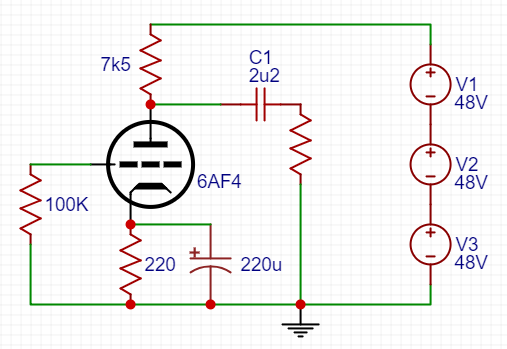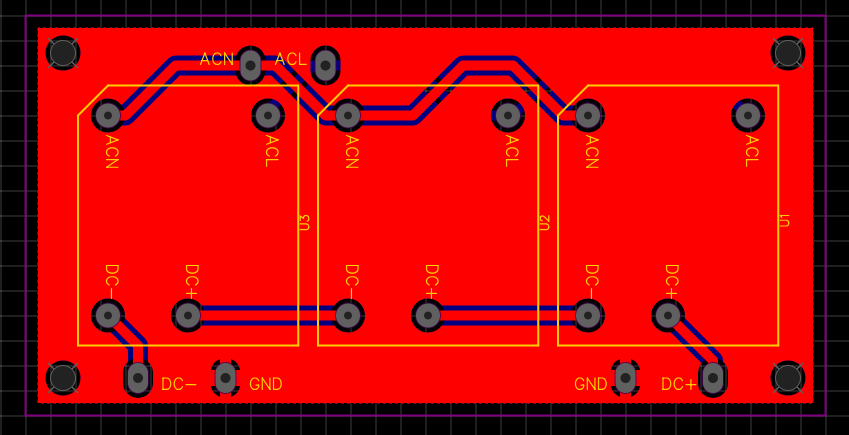Having recently moved and had a second kid, tubes should be the last thing on my mind, right? Maybe. Then again,personal hobbies should always have a place in day-to-day life, and especially when that life gets a little chaotic. Such hobbies are about exploration and continuously challenging oneself. And yes, sometimes a little bit of dorky obsession.
Hence, with all my tools in boxes and precious little spare time, I have a great opportunity to revisit quick, cheap, and cheerful tube design (at least this is what I tell myself).
Last spring I posted about a sleeper tube that looked to me like it had potential in a simple linestage. The single triode has modest B+ requirements, low Mu, and respectable transconductance, exactly what we might look for in a bare-bones capacitor coupled preamp. To boot, the tube is called 6AF4. AF. How could I resist?
Here are the plate curves, highlighted where it looks pretty good to me:

It looks like we could work with as low as a 100Vdc supply here, but plate resistance appears lower and more consistent if we have 150Vdc on tap. With 150V B+, a 7.5k loadline passes right through the middle of my target zone of operation, intersecting the y axis at 150V/7500 ohms = 20mA. A 220 ohm cathode resistor looks like a good place to start and should allow a dozen or so milliamps through the triode. The result, fleshed out, looks something like this:

Back in my original post on the topic, I mused about 48V switching supplies wired in series to generate a B+. That’s a monkey I still haven’t gotten off my back, so I drew up a little PCB based on the XP Power VCE05 module. This is a $12 encapsulated AC/DC converter that puts out 100mA+ at 48V. Three in series gives ~150V in a very compact footprint and at a cost comparable to a small Hammond EI transformer.

Although a pair of 6AF4s will only need 25mA or so, a pair of these boards would (hypothetically) be capable of powering a small power amplifier (300V @ 100mA). It’s worthy of some exploration.

